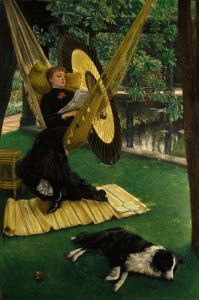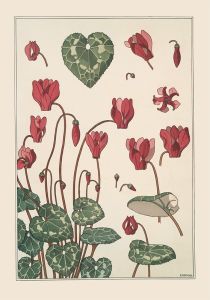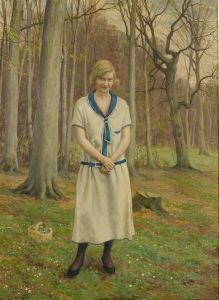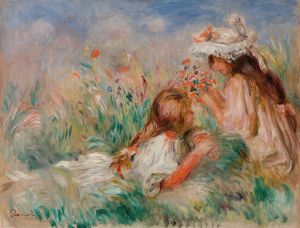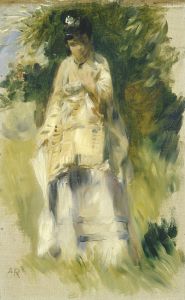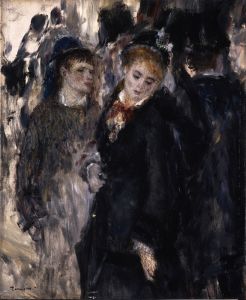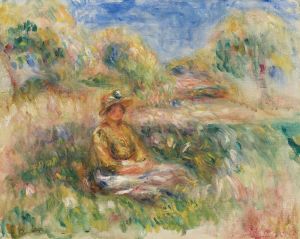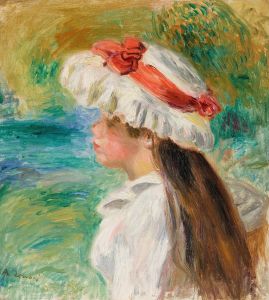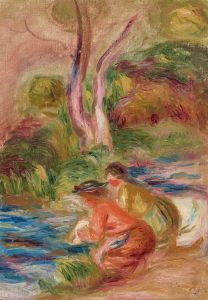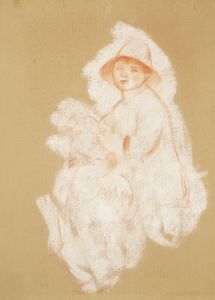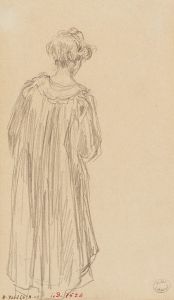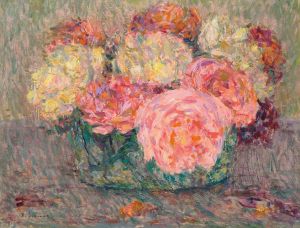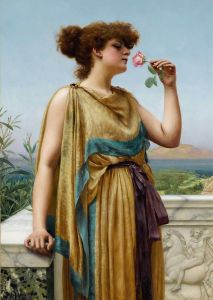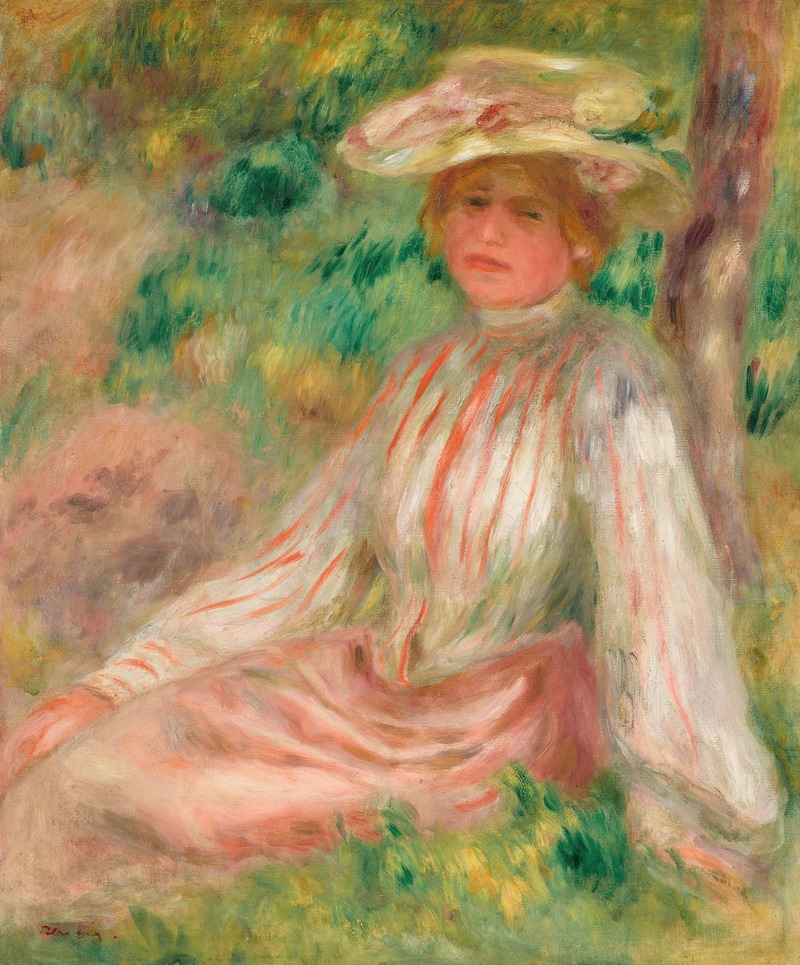
Femme au jardin
A hand-painted replica of Pierre-Auguste Renoir’s masterpiece Femme au jardin, meticulously crafted by professional artists to capture the true essence of the original. Each piece is created with museum-quality canvas and rare mineral pigments, carefully painted by experienced artists with delicate brushstrokes and rich, layered colors to perfectly recreate the texture of the original artwork. Unlike machine-printed reproductions, this hand-painted version brings the painting to life, infused with the artist’s emotions and skill in every stroke. Whether for personal collection or home decoration, it instantly elevates the artistic atmosphere of any space.
"Femme au jardin" is a painting by the renowned French artist Pierre-Auguste Renoir, a leading figure in the Impressionist movement. Renoir, born in 1841, was known for his vibrant light and saturated color, often focusing on people in intimate and candid compositions. His works are celebrated for their beauty, sensuality, and depiction of light.
"Femme au jardin," which translates to "Woman in the Garden," is a testament to Renoir's skill in capturing the essence of outdoor scenes and the interplay of natural light. While the exact date of this painting is not definitively documented, it is believed to have been created during the late 19th century, a period when Renoir was deeply engaged with the Impressionist movement.
The painting features a woman in a garden setting, a common theme in Renoir's work, reflecting his interest in leisure activities and the bourgeois lifestyle of the time. Renoir often painted scenes of gardens, parks, and outdoor gatherings, capturing the leisurely pursuits of Parisians. His work during this period is characterized by loose brushwork, a light palette, and an emphasis on capturing the fleeting effects of light and atmosphere.
In "Femme au jardin," Renoir employs his signature style, using soft, fluid brushstrokes to create a sense of movement and life. The woman's figure is integrated into the lush surroundings, with dappled sunlight filtering through the foliage, creating a harmonious blend of figure and nature. This technique highlights Renoir's ability to depict the subtleties of light and shadow, a hallmark of Impressionist painting.
Renoir's choice of subject matter and his approach to painting were influenced by his contemporaries, including Claude Monet, with whom he often painted en plein air, or outdoors. This method allowed Renoir to observe and capture the changing qualities of natural light directly, a key aspect of Impressionist art.
The painting reflects Renoir's fascination with beauty and his desire to convey a sense of joy and pleasure through his art. His works from this period often evoke a sense of warmth and intimacy, inviting viewers to share in the serene and idyllic moments he depicted.
Renoir's contribution to the Impressionist movement was significant, and his works continue to be celebrated for their innovative approach to color and light. "Femme au jardin" exemplifies his mastery of these elements, showcasing his ability to transform everyday scenes into vibrant and evocative works of art.
Today, Renoir's paintings are held in high esteem and are featured in major art museums and collections worldwide. His influence on the development of modern art is profound, and his works remain a testament to the enduring appeal of the Impressionist style.





